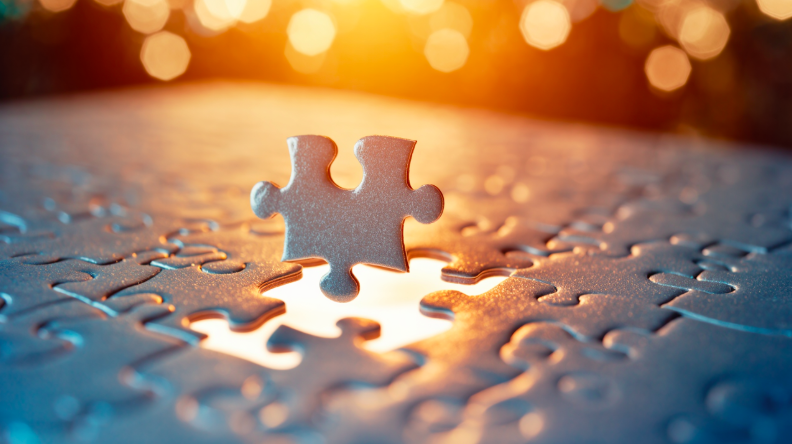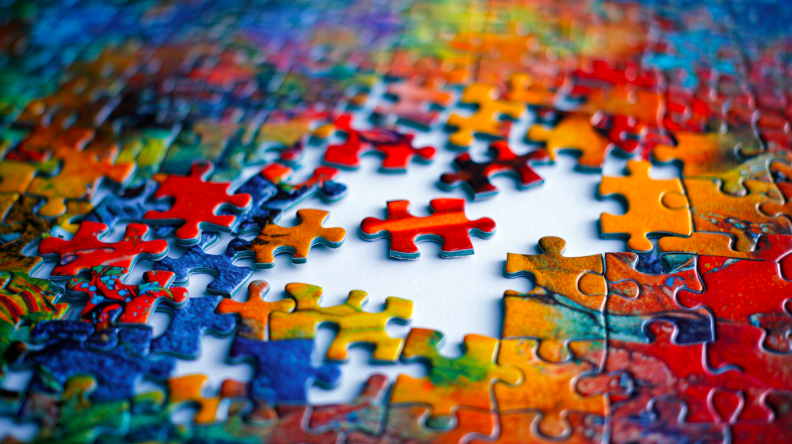How To Photograph Completed Puzzles: A Step-by-Step Guide
Learn how to photograph completed puzzles with these easy tips. Capture your puzzle’s beauty and preserve the memories effectively.
Apr 03, 202512.7K Shares171.6K Views

Capturing completed puzzles is a wonderful way to preserve the sense of accomplishment and joy that comes with finishing a challenging puzzle. Whether it’s a family activity or a personal achievement, photographing your completed puzzles allows you to keep those memories alive. It’s a great way to show off your hard work and share the finished product with others.
In this article, we’ll walk you through the steps of photographing your completed puzzles effectively. We’ll cover helpful tips and techniques to ensure your photos look great, from lighting to composition. Whether you’re new to puzzle photography or looking for ways to improve, this guide will help you get the most out of your puzzle photos.
Setting Up Your Space
Importance Of A Well-Organized Workspace
A well-organized workspace is crucial for photographers as it helps in maintaining focus and efficiency. It ensures that all necessary tools are easily accessible, reducing time spent searching for equipment and allowing more time for creative work1.
Choosing A Suitable Background
- Neutral Colors: Use backgrounds with neutral colors like white, gray, or black to avoid distracting from the subject.
- Textured Options: Incorporate textured backgrounds for added depth and visual interest.
- Portable Backdrops: Invest in portable backdrops for easy setup and transport.
Managing Lighting
- Natural Light: Utilize natural light when possible as it provides a soft, flattering effect.
- Artificial Lighting: Use artificial lighting like softboxes or strobes for controlled environments.
- Lighting Position: Experiment with different lighting positions to achieve desired effects.
Minimizing Clutter
- Designated Storage: Assign specific storage for each piece of equipment to keep the workspace tidy.
- Regular Cleaning: Regularly clean the workspace to prevent dust accumulation on equipment.
- Efficient Layout: Arrange equipment in a way that maximizes space and accessibility.
Choosing The Right Equipment
Basic Camera Options
For puzzle photography, you can use:
- Smartphones: Many smartphones have high-quality cameras that can capture detailed images.
- DSLRs (Digital Single-Lens Reflex): These offer more control over settings like focus and exposure.
- Point-and-Shoot Cameras: Simple and easy to use, they are good for beginners.
Essential Accessories
- Lenses: Different lenses can help you capture more detail or a wider view. For example, a macro lens is great for close-up shots.
- Tripods: These keep your camera steady, which is important for clear photos, especially in low light.
- Additional Lighting: Extra light can help reduce shadows and make your puzzle pieces clearer. Natural light or a simple desk lamp can be useful.
Tips For Better Photos
- Use a tripod to avoid blurry photos.
- Experiment with different lighting setups to find what works best for your puzzle.
- If using a smartphone, consider a tripod adapter for stability.
Composition And Styling
Symmetry
- Importance: Symmetry creates balance and harmony in a photo. It makes the image visually appealing by aligning elements in a mirror-like fashion.
- Tips: Use reflective surfaces or architectural features to create symmetrical compositions.
Angles
- Importance: Different angles add depth and interest to your photos. Shooting from unique perspectives can make your images stand out.
- Tips: Experiment with low or high angles to create dramatic effects.
Creative Styling Options
- Props: Adding props can enhance the story or theme of your photo. Choose props that relate to your subject or message.
- Perspectives: Use forced perspective to create optical illusions, making objects appear larger or smaller than they are.
- Framing: Use natural or man-made frames to focus attention on your subject and add depth to your photos.
Additional Tips
- Simplify: Keep your composition simple by eliminating distractions and focusing on your main subject.
- Experiment: Try different composition techniques to find what works best for your shot
Capturing The Perfect Shot
To capture the perfect photo, follow these steps:
1. Prepare Your Camera
- Choose the Right Gear: Use a camera that fits your needs, whether it's a DSLR or a smartphone.
- Check Your Settings: Ensure your camera is set to the right mode (e.g., manual, auto) and that your memory card has enough space.
2. Focus On Your Subject
- Use Autofocus: Press the shutter button halfway to focus on your subject.
- Manual Focus: Use manual focus if you need more control over what's in focus.
3. Adjust Exposure Settings
- Understand the Exposure Triangle: This includes ISO, Aperture, and Shutter Speed.
4. Capture Details
- Puzzle Textures: Use a macro lens or zoom in to capture intricate details.
- Colors: Adjust your white balance to ensure colors are accurate.
5. Pay Attention To Lighting
- Natural Light: Shoot during early morning or late evening for soft, warm light.
- Artificial Light: Use flash or lamps to add depth and contrast.
6. Composing Your Shot
- Rule of Thirds: Place important elements along lines or at intersections.
- Background: Keep it simple and clutter-free to focus attention on your subject.
7. Review And Adjust
- Check Your Photos: Review your shots immediately to see if adjustments are needed.
- Take Multiple Shots: Use burst mode to capture the perfect moment, especially in dynamic situations
Post-Processing And Sharing
Editing Photos Using Software Like Lightroom or Photoshop:
Once you’ve taken your puzzle photo, editing can help enhance the image and make it look even better. Software like Lightroom and Photoshop are great tools for this. You can start by cropping your image to remove any unwanted parts or adjust the framing for a cleaner look.
Enhancing Colors:
To make your puzzle colors pop, you can adjust the saturation and vibrancy. Increasing these settings can make the colors of your puzzle stand out more. In Lightroom, you can use the "HSL" panel to fine-tune specific colors, like making reds more vibrant or enhancing the blues in the background.
Adjusting Brightness and Contrast
Adjusting the brightness helps make your photo lighter or darker. If your photo looks too dark or overexposed, try changing the exposure settings. You can also increase the contrast to make the puzzle pieces stand out more against the background, giving the image more depth.
Sharpening the Image
Sometimes, your photo might look a bit soft or blurry. In Lightroom and Photoshop, you can sharpen the image to make the details clearer. Be careful not to over-sharpen, as this can create noise in the photo.
Sharing Your Final Images on Social Media
Once you’re happy with the final result, it’s time to share it! Social media platforms like Instagram, Facebook, and Pinterest are great places to show off your puzzle photography. Make sure to use appropriate hashtags, such as #puzzleart or #puzzlephotography, to make it easier for others to find your work. You can also add a description or story behind the puzzle to engage with your audience. When posting, be mindful of the image size and resolution to make sure it looks sharp and clear on all devices.
FAQs
What Is The Best Camera For Puzzle Photography?
For puzzle photography, a DSLR or mirrorless camera is often the best choice due to its ability to capture detailed images with excellent color accuracy. Cameras like the Canon EOS Rebel series or Sony Alpha series are great options. These cameras allow you to adjust settings like aperture, shutter speed, and ISO to get the best shot of your puzzle. However, if you’re on a budget, a high-quality point-and-shoot camera with manual settings can also work well.
How Do I Avoid Reflections On The Puzzle Surface?
To avoid reflections on the puzzle surface, use diffused lighting. Position the lights at an angle and avoid direct light hitting the surface. You can also use a polarizing filter on your camera lens to reduce reflections. Another tip is to use a matte background for the puzzle to prevent light from bouncing off and creating unwanted glare.
What Are Some Creative Ways To Display Puzzle Photos?
There are many creative ways to display puzzle photos. You can turn your image into a digital frame slideshow or print it on canvas for wall decor. Another idea is to create a photo book showcasing your puzzle collection, or share your photos in a gallery format on your website or social media. You can even print your puzzle photos on products like mugs or T-shirts for a personalized touch.
Can I Use A Smartphone For High-quality Puzzle Photography?
Yes, you can use a smartphone for high-quality puzzle photography, especially with the improved camera technology in newer models. Smartphones like the iPhone 13 or Samsung Galaxy S21 offer great cameras with advanced features like portrait mode, manual controls, and high resolution. To get the best results, use a tripod, ensure good lighting, and consider using a camera app with manual settings.
How Do I Ensure Consistent Lighting For Puzzle Photography?
To achieve consistent lighting, use soft, even light sources. Natural light is ideal, but if you’re shooting indoors, invest in softbox lights or LED panels. Place the lights at a 45-degree angle to the puzzle to avoid harsh shadows. Using a light meter or adjusting your camera’s exposure settings can also help maintain consistent lighting throughout your shoot.
Latest Articles
Popular Articles
